How we're working to save them:
Conservation Actions
- Ramp up alien species removal, such as Brook, Brown, and Rainbow trout, with appropriate education and outreach efforts.
- Maintain Lahontan Cutthroat in current habitats and reintroduce them to historical habitat where practicable.
- Assess and prioritize current and potential Lahontan Cutthroat trout habitats for restoration.
- Reduce stream diversions, reconnect fragmented floodplain and riparian habitats to stream reaches, and improve instream habitat.
- Explore use of a conservation hatchery and associated genetic management plan to maintain genetic diversity and serve as source populations for future reintroduction efforts.
- Assess, prioritize, and restore riparian and headwater meadows to boost water storage capacity, restore critical habitats, and bolster resiliency to climate change.
Click here to learn about CalTrout’s overall “Return to Resilience” plan to save California’s salmonids from extinction.
Where to find Lahontan Cutthroat Trout Distribution:
Lahontan Cutthroat Trout Distribution Distribution
Historically, Lahontan Cutthroat trout were found across the Lahontan Basin in Southern Oregon, Eastern California and Northern Nevada. The Western Lahontan segment of the species encompasses fish in their current range in California, including populations in the Carson, Truckee, and Walker drainages, Lake Tahoe tributaries, and some lakes. Once found in the Susan River drainage, Lahontan Cutthroat trout since have been transplanted to other basins in California to help boost their populations in different geographies.
How the Lahontan Cutthroat Trout Scored:
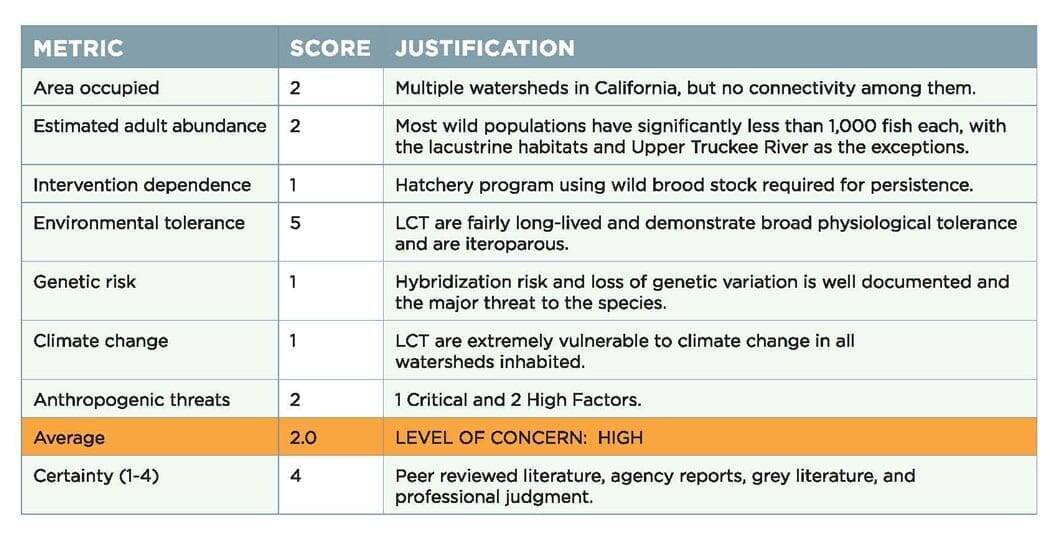
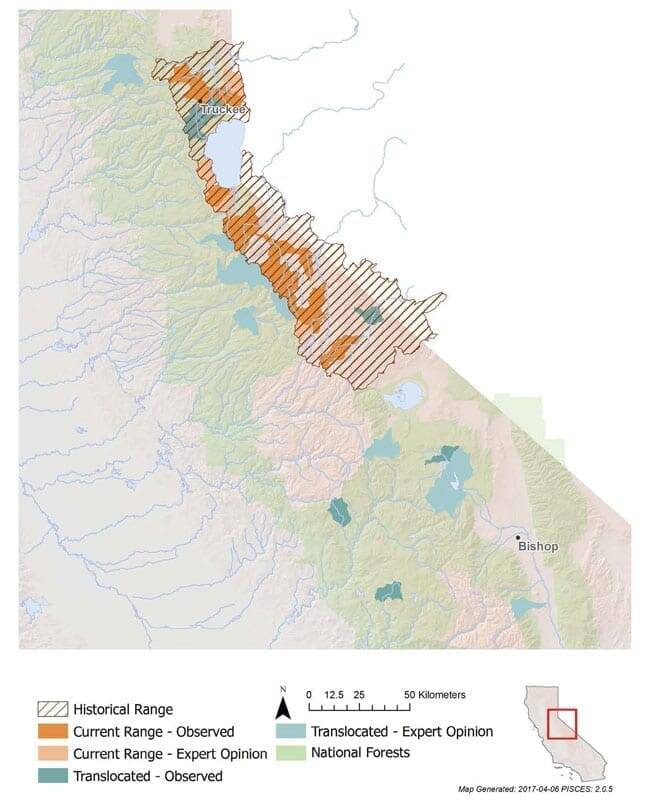
Characteristics
Lahontan Cutthroat trout are the largest subspecies of Cutthroat trout, capable of weighing over 9kg (20 lbs.). Their color varies based on their habitat: lake-dwelling fish are pale gold or silver with pink or purple hues along their flanks and gill plates and greenish- bronze to dark olive backs. Lahontan Cutthroat trout found in streams are usually much smaller than those found in lakes, and may exhibit purple or bluish hues along their flanks and parr marks. Yellow to red slash marks under their mouth gives them their ‘cutthroat’ name.
Abundance
Lahontan Cutthroat trout persist in less than 5% of their original stream habitat and a mere 0.4% of their original lake habitat in California. Wild, self-sustaining populations in headwater streams in California likely total only a few hundred fish each, with the possible exception of the Upper Truckee River. Local extirpations of isolated populations likely occurred during California’s historic drought from 2012 -2016, further reducing the species’ remnant populations throughout their range. To help combat the continued declines, populations have been established in nine creeks outside of their native range in California through stocking from source populations and protected by man-made and natural barriers. With the help of many partners, alien species removal, especially of Rainbow and Brook trout in Slinkard and Silver creeks, has become an essential component of expanding the species’ range.
Habitat & Behavior
Lahontan Cutthroat trout are very adaptable and capable of withstanding conditions that few other trout could survive. They are highly tolerant of alkaline waters, high stream temperatures, and low dissolved oxygen that has allowed them to flourish in harsh, arid environments. While these fish can grow large in lakes, they must spawn in streams. Ensuring healthy stream habitats are available to lake-dwelling Lahontan Cutthroats is critically important to allow them to complete their life cycle. Spawning typically occurs from April through July, though fall spawning has been documented in some populations. They feed primarily on terrestrial and aquatic invertebrates, leeches, and small fish as they grow larger.
Genetics
Lahontan Cutthroat trout are closely related to the Paiute Cutthroat trout found in the Carson River Basin. They readily interbreed with Redband, Cutthroat, and Rainbow trout, making them especially vulnerable to hybridization.



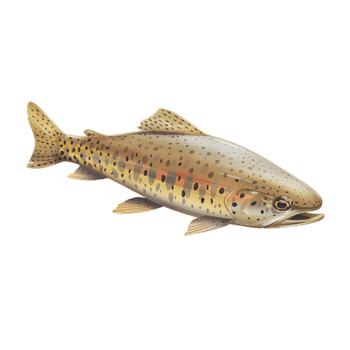
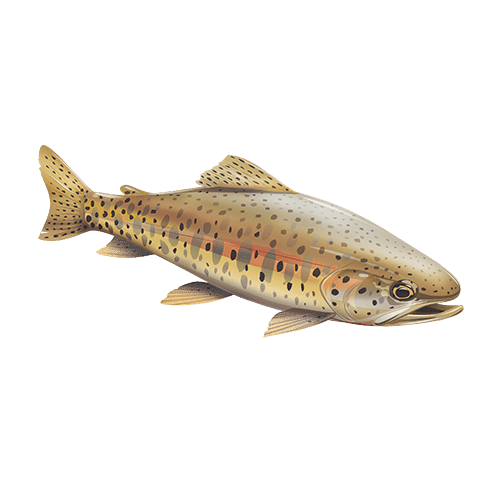




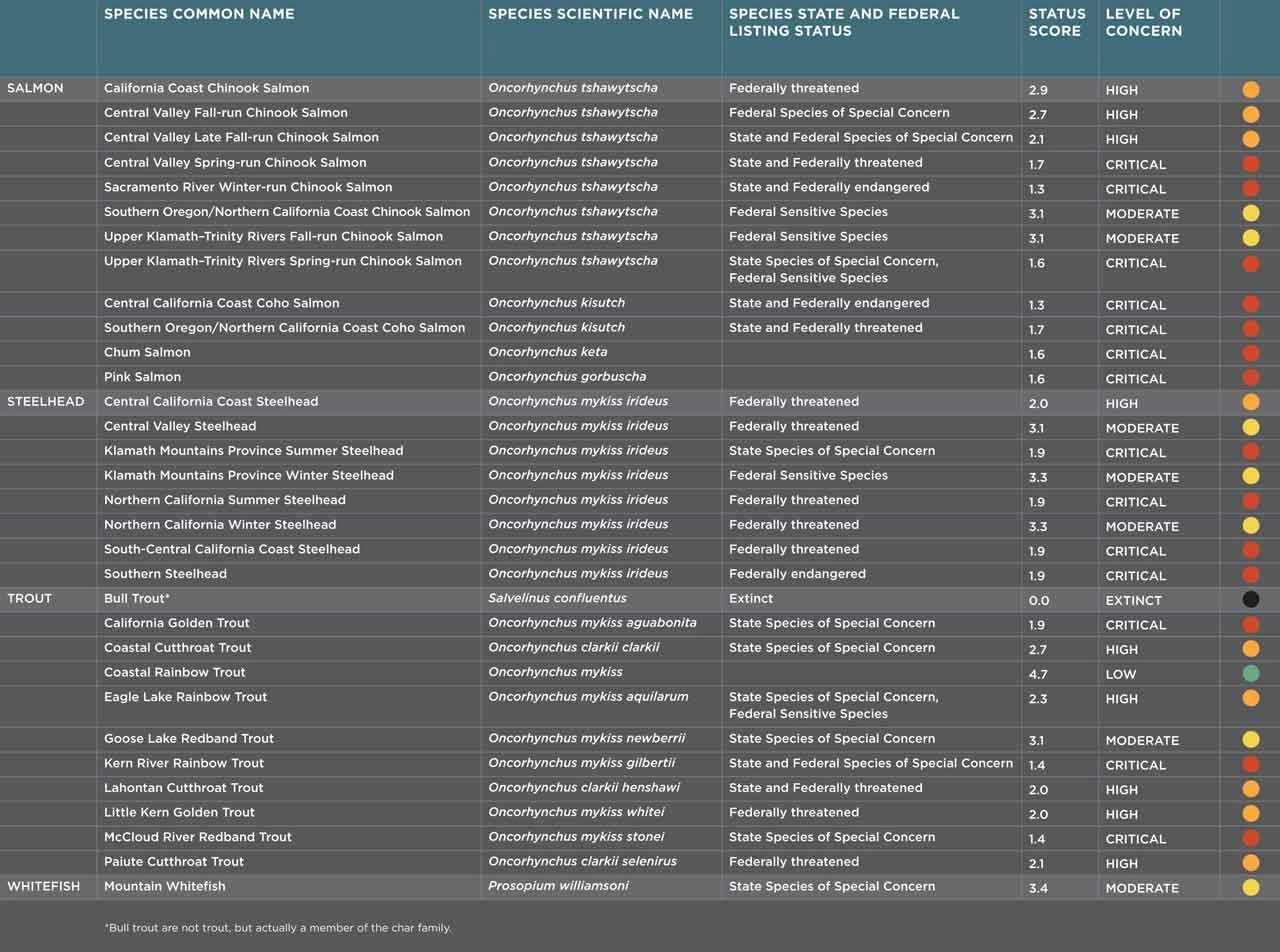












 Dams block access to historical spawning and rearing habitats. Downstream, dams alter the timing, frequency, duration, magnitude, and rate of change of flows decreasing habitat quality and survival.
Dams block access to historical spawning and rearing habitats. Downstream, dams alter the timing, frequency, duration, magnitude, and rate of change of flows decreasing habitat quality and survival.